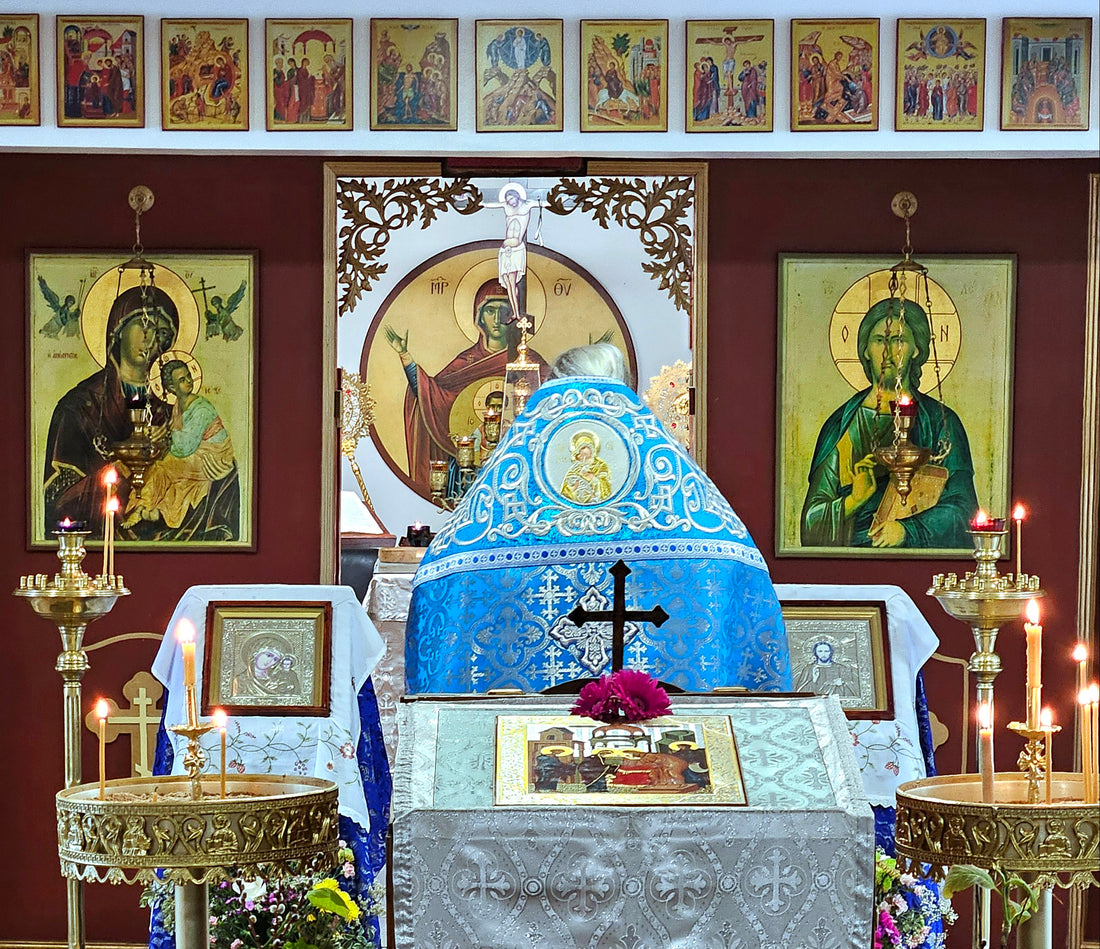
What do colors in Eastern Orthodoxy represent?
Share
Green
In the Orthodox Church Tradition, green is a color that points to the Holy Spirit and the gift of eternal life, provided by God our Creator as a road to endless worship of God and the ongoing discovery of His holy creation. We also honor God’s demonstration of green that appears in countless ways in nature upon the earth. We decorate our churches with green on the Feast of Holy Pentecost, and during the Pentecost period, the clergy, tonsured readers, and acolytes wear green vestments to honor the season of Pentecost and the time when God choose to allow the Holy Spirit to descend upon the apostles, and ultimately upon all who are Baptized in Christ. (“ As many as have been baptized into Christ, have put on Christ. Alleluia!” –sung in the event of all baptisms in the Eastern Orthodox Church.)Red
The color red in Eastern Orthodox Churches is always vibrant and beautiful. It is said that when God spoke to Moses in the burning bush on Mt. Horeb, this was the beginning of the tradition of red representing God the Father. In the Orthodox Church, the clergy, tonsured readers, and acolytes wear red on Pascha (Orthodox Easter), to signify the spilling of Christ’s blood as he was suspended upon the cross. This ultimate sacrifice, the very death upon the cross of the Son of God, led to His Resurrection, and also re-opened the gates of Paradise so that the righteous ones could enter in after death. Holy Martyrs are honored with the color red for their willingness to die for Christ. It is said that the soldiers at the cross dressed Christ in a red robe, another symbol of Christ’s approaching death and ultimately victory over death itself.
Blue
Blue in the Orthodox Church represents Heaven. When blue and white colors are worn or displayed during worship services in the Church, this also represents the Virgin Mary, the Mother of God, in the fullness of her willingness to accept the overshadowing of the Holy Spirit in order to conceive the Son of God. Many Orthodox Churches are named for the Theotokos. The literal paraphrase of this word from Greek to English is “She whose Offspring is God.” Thus, the combination of white (symbolizing “purity”) and blue are the colors associated with the Mother of God. Additionally, Jesus Christ and the saints are often shown in icons wearing blue robes because they are seen as ones who dwell in Heaven.
White
The color white represents God, the Creator of all things visible and invisible. It is fitting, then, that the color worn by priests, tonsured readers, and acolytes on the Nativity of Christ and the Baptism of Christ, along with the decorated church linens, are always white, with either gold or silver trim. Many churches use white to decorate during the Paschal (Easter) season as well, and continue with white until Pentecost when the colors turn to green. The Divine Light is symbolized by white in the church, as a means of understanding the purity and brilliance of God. It is interesting to note that white vestments are also worn by the priest conducting an Orthodox funeral.
Gold or Yellow
Gold and yellow in the Orthodox Church signify God’s love for His creation and all of humanity. These colors also depict God’s supreme splendor and dignity. Gold or yellow vestments are often worn by the clergy, tonsured readers, and acolytes throughout the liturgical year, as these colors symbolize the ardent warmth of God’s love. Domes on the exterior of a church that are gold in color convey that it is a church honoring Christ, or that commemorates one of the 12 Great Feasts of the Church.
Black (or Purple)
Apart from being a universal mourning color, black in the Orthodox Church signifies monasticism. After being tonsured as a monk or a nun, the monastic then wears black robes for the rest of his or her earthly life, signifying the letting go of the world for higher, spiritual strivings. Also, during Great Lent, the colors of the church linens are changed to either black or deep purple, as are the vestments of the clergy, tonsured readers, and acolytes.
